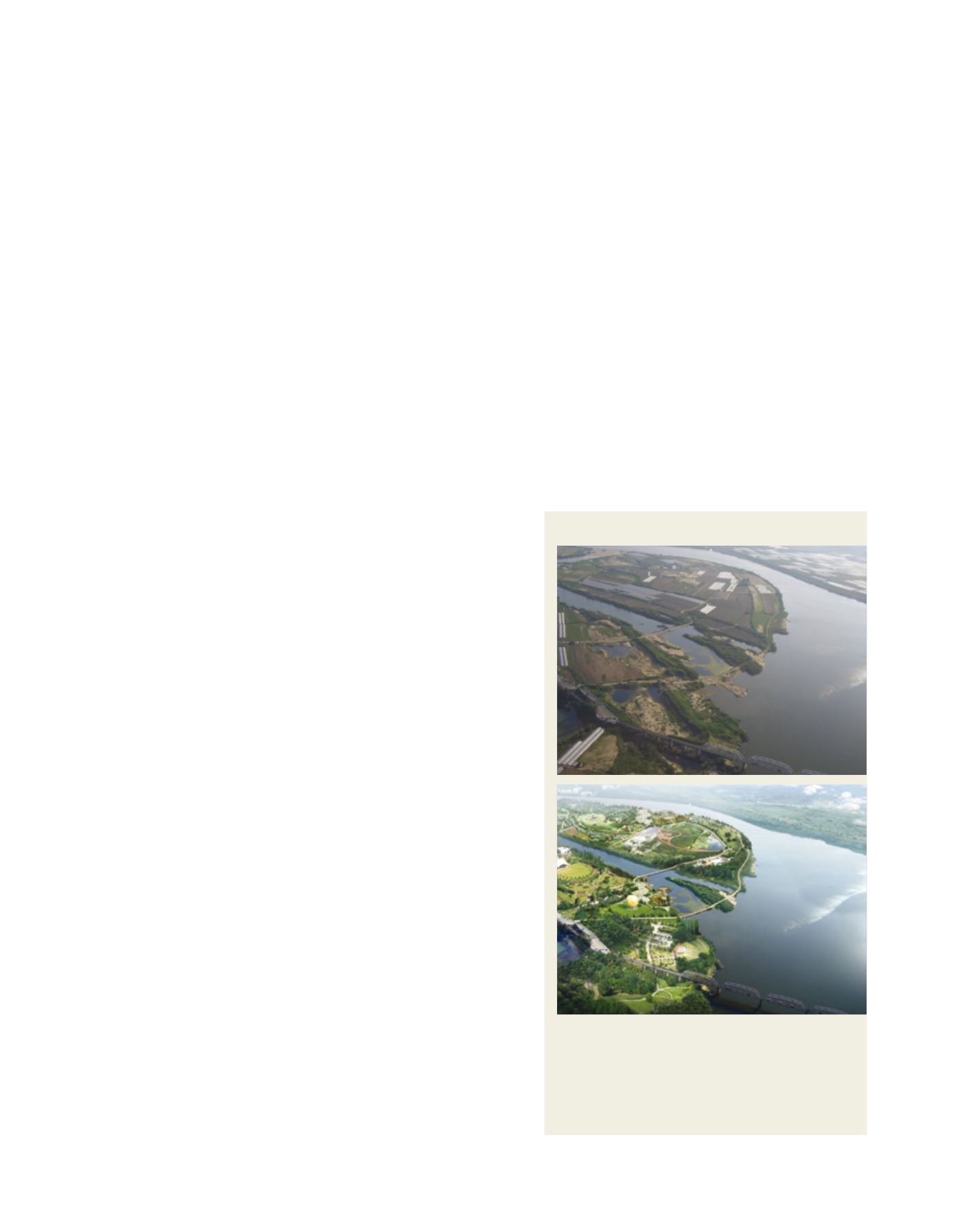

Case study: the Four Rivers Project
[
] 206
W
ater
C
ooperation
, S
ustainability
and
P
overty
E
radication
it was a sound social learning process in which the state,
civil society, experts and ordinary citizens understood
different parties’ interests and concerns. The experience
also implies an establishment of democratic decision-
making in which stakeholders became more accustomed
to reaching a consensus through persuasion and discus-
sion. More importantly, this exercise had culminated in
the creation of the centre-local network for water coop-
eration, and central government officials began to have a
good understanding of local water issues.
Korea’s contribution to the promotion of water coop-
eration at the international level has gradually increased,
and this trend will continue. There is growing recogni-
tion within the country that it is time for Korea to commit
itself to aiding the international community, particularly
developing countries, in supporting socioeconomic devel-
opment and environmental sustainability. Institutional
and technical experiences in sustainable water manage-
ment in Korea will pave the way for developing countries
to emulate management practices for their own long-term
economic, societal and environmental development.
Flood hazard mitigation is a prime objective for the project. Climate
change has triggered record highs in torrential rainfall and large-scale
typhoons in recent years. For example, in 2011 more than 1,800
mm of annual precipitation was recorded in Korea, which usually
receives an average annual precipitation of around 1,240 mm. Thanks
to the project, flood water levels under the heavy summer storms
were reduced by 1.31 m on average and 4.45 m at the maximum. An
extraordinary flood event like the one in 2011 could occur at any time
due to climate change. The outcomes of the Four Rivers Project will
continue to be monitored and evaluated in the future.
Rivers are the arteries of a nation and the foundation for soci-
oeconomic development. The Four Rivers Project will be able to
incorporate the overall enhancement of water supply, flood preven-
tion, water quality and ecosystems into culture, tourism and history
at the local level to buttress local economies with an emphasis on
each riparian characteristic. The project provides an example of how
green initiatives can revive the environment, economy and society.
In spite of the global economic downturn beginning in 2008, Korea
has invested 2 per cent of gross domestic product every year in the green
sector from 2009 to 2013, and has allocated US$19.2 billion to the Four
Rivers Project in order to promote economic growth and advanced
water management. In response to the growing interest of developing
countries in emulating Korean water management practices, the Korean
Government has been in contact with Algeria and Thailand to help
resolve complex water challenges based on experience of the project.
In a national context, one of the recent policy efforts to facilitate
water cooperation in Korea was the revision of the Korea Water Vision
(2000-2010) in 2006. This case delineates the extent to which water
cooperation between the Government and civil society can create demo-
cratic decision-making mechanisms based on governance. The vision
was first established in 1999 in accordance with the River Law, but
had been heavily criticized by non-state actors, particularly environ-
mental non-governmental organizations (NGOs), for its undemocratic
decision-making process. As a result, environmental NGOs and other
social groups refused to accept the statistics and figures in the vision,
particularly in terms of the level of water scarcity the country might face
in a decade. They were concerned that such data might legitimize the
Government’s conventional approach to resolving water supply issues
by augmenting more dams in the future regardless of the dams’ detri-
mental impacts on overall ecosystems.
Faced with such criticism, the central Government decided to invite
diverse stakeholders at both central and local levels and began establish-
ingwater cooperationmechanisms based on consensus building through
multi-stakeholder dialogue. In 2003, initiated by the Government, the
Water Supply Preparation Committee was set up, comprising relevant
ministries, research institutions and groups from civil society, and the
Korea Water Vision Committee was also created in May 2004.
It was emphasized that the new system should encourage all the rele-
vant stakeholders to take an active part not only in exchanging their
views and opinions, but also in the early stage of planning. For instance,
the expert subcommittee appointed a chairperson who convened meet-
ings. All the stakeholders were given related data and information on
water supply and explored options based on thorough analyses and
evaluations. Such practices effectively reflected important principles of
water cooperation based on governance – namely multi-stakeholder
participation, transparency and information sharing– and entailed the
removal of distrust between the state and civil society.
Some 45 subcommittee meetings took place in two years. The
process of decision-making was painstaking and time consuming, but
Images: Ministry of Land, Infrastructure and Transport
Before restoration (top): the Nakdong River’s narrow width
means the the upper reaches suffer from droughts while
the lower reaches are prone to floods.
After restoration (bottom): the Four Rivers Project will
begin at the Nakdong River, revitalizing cities and creating
a world-class tourism belt


















